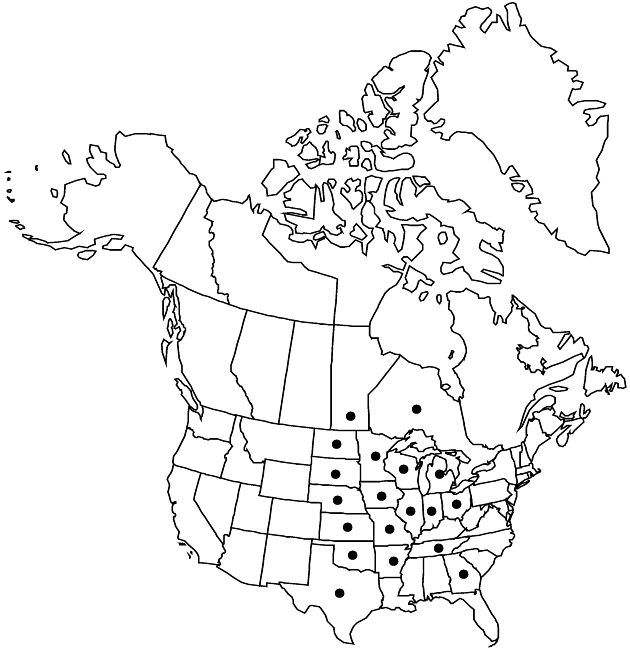Difference between revisions of "Symphyotrichum sericeum"
Phytologia 77: 291. 1995.
FNA>Volume Importer |
FNA>Volume Importer |
||
| Line 11: | Line 11: | ||
|name=Aster sericeus | |name=Aster sericeus | ||
|authority=Ventenat | |authority=Ventenat | ||
| + | |rank=species | ||
|publication_title=Descr. Pl. Nouv., plate | |publication_title=Descr. Pl. Nouv., plate | ||
|publication_place=33. 1800 | |publication_place=33. 1800 | ||
| Line 17: | Line 18: | ||
|name=Lasallea sericea | |name=Lasallea sericea | ||
|authority=(Ventenat) Greene | |authority=(Ventenat) Greene | ||
| + | |rank=species | ||
}} {{Treatment/ID/Synonym | }} {{Treatment/ID/Synonym | ||
|name=Virgulus sericeus | |name=Virgulus sericeus | ||
|authority=(Ventenat) Reveal & Keener | |authority=(Ventenat) Reveal & Keener | ||
| + | |rank=species | ||
}} | }} | ||
|hierarchy=Asteraceae;Asteraceae tribe Astereae;Symphyotrichum;Symphyotrichum subg. Virgulus;Symphyotrichum sericeum | |hierarchy=Asteraceae;Asteraceae tribe Astereae;Symphyotrichum;Symphyotrichum subg. Virgulus;Symphyotrichum sericeum | ||
| Line 44: | Line 47: | ||
-->{{#Taxon: | -->{{#Taxon: | ||
name=Symphyotrichum sericeum | name=Symphyotrichum sericeum | ||
| − | |||
|authority=(Ventenat) G. L. Nesom | |authority=(Ventenat) G. L. Nesom | ||
|rank=species | |rank=species | ||
| Line 59: | Line 61: | ||
|publication year=1995 | |publication year=1995 | ||
|special status= | |special status= | ||
| − | |source xml=https://jpend@bitbucket.org/aafc-mbb/fna-data-curation.git/src/ | + | |source xml=https://jpend@bitbucket.org/aafc-mbb/fna-data-curation.git/src/eaa6e58056e40c9ef614d8f47aea294977a1a5e9/coarse_grained_fna_xml/V19-20-21/V20_1109.xml |
|tribe=Asteraceae tribe Astereae | |tribe=Asteraceae tribe Astereae | ||
|genus=Symphyotrichum | |genus=Symphyotrichum | ||
Revision as of 19:24, 16 December 2019
Perennials, (20–)30–70 cm, cespitose, eglandular; with short, woody, cormoid caudices, or short rhizomes. Stems 1–5+, ascending to erect (thin, grayish brown to dark brown), glabrous proximally, densely canescent distally. Leaves (silvery) firm, soft; basal withering by flowering, sessile, blades (1–3 nerved) elliptic-lanceolate, 10–40 × 5–15 mm, bases cuneate, weakly sheathing, margins usually entire, rarely remotely serrate, piloso-ciliate, apices acute, faces less copiously hairy than cauline; proximal cauline withering by flowering, sessile, blades oblanceolate or oblong to linear-lanceolate, 15–30(–50) × 4–10 mm, slightly and progressively reduced distally, bases rounded, subclasping, margins entire, silky-pilose, apices obtuse to acute, mucronulate, faces sparsely to densely silky-pilose; distal sessile, blades lanceolate, 10–30 × 5–8 mm, little reduced distally, bases cuneate, margins entire, apices acute, mucronate, faces ± densely silky. Heads in open, paniculiform arrays, branches sparse, fastigiate, often arching (1–5+ per branch). Peduncles subsessile or 0.5–3(–5) cm, densely sericeo-strigose, bracts crowded, 4–8(–10) mm, grading into phyllaries. Involucres campanulate to cylindric, (5–)7.5–10 mm. Phyllaries in 3–5(–6) series, outer ovate with expanded distal portion [(4–)5–6 mm], mid ovate-lanceolate [6–8(–10) mm] with expanded green portions, inner linear, unequal or sometimes subequal, outer often foliaceous, bases (mid) scarious, margins silky, green zones restricted to expanded distal 1/2–2/3 (obscured by hairs), apices (outer) spreading or squarrose to reflexed, acute, mucronulate, faces densely long-silky. Ray florets (10–)15–30; corollas usually rose-purple to deep purple, rarely white, laminae 8.5–11 × 1–1.5 mm. Disc florets (15–)25–35; corollas pink turning purple, (5–)5.5–7 mm, tubes shorter than narrowly funnelform throats (both thinly puberulent), lobes deltate, 0.7–0.9 mm. Cypselae purple or brown, obovoid, not compressed, 2–3 mm, 7–10-nerved (prominent), faces glabrous; pappi whitish or tawny, 6–7 mm. 2n = 10, 20.
Phenology: Flowering Aug–Oct.
Habitat: Open, dry, deep, sandy or loamy soils, broken limestone outcrops, open-wooded bluffs, open woods, open calcareous hammocks, prairies, fields, sand barrens, dunes, dry banks, rarely acidic shield rocks
Elevation: 100–500+ m
Distribution

Man., Ont., Ark., Ga., Ill., Ind., Iowa, Kans., Mich., Minn., Mo., Nebr., N.Dak., Ohio, Okla., S.Dak., Tenn., Tex., Wis., West Indies (Bahamas).
Discussion
Symphyotrichum sericeum is known in the Bahamas as S. lucayanum (Britton) G. L. Nesom [syn. Aster lucayanus Britton, Virgulus lucayanus (Britton) Reveal & Keener]. It is of conservation concern in Indiana, Michigan, and Canada. Symphyotrichum sericeum is distinct and unlikely to be confused with other species due to its silvery-silky leaves and phyllaries, open arrays, and cormoid rootstocks. Aster sericeus forma albiligulatus Fassett is a white form of the species, in contrast to the typically purple forma sericeus; these do not deserve formal recognition.
Selected References
None.